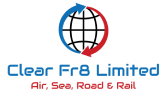Merchandise In Baggage (MIB)
Merchandise in baggage customs clearance is the process by which goods carried in baggage are examined, assessed, and taxed by customs officials, Clear Fr8 are able to assist with all Merchandise in baggage customs clearance entries. This process is necessary to ensure that imported goods comply with local regulations and are not subject to prohibited or restricted trade. It is important to understand the requirements and procedures for merchandise in baggage customs clearance to avoid delays, penalties, and even seizures of goods.
When traveling internationally, it is important to declare any goods that are being brought into the country. This includes items purchased abroad, gifts received, or personal belongings. Depending on the value and nature of the goods, customs duties, taxes, and fees may be assessed upon entry into the country. Failure to declare items or attempting to smuggle prohibited or restricted goods can result in fines, penalties, and even criminal charges.
What is merchandise in baggage?
Merchandise in baggage customs clearance procedures vary depending on the country and mode of transportation. When entering a country by air, passengers are required to complete a customs declaration form that lists all goods being brought into the country. This form is usually distributed on the airplane and must be filled out accurately and truthfully. If you have any doubts about whether a particular item should be declared, it is best to err on the side of caution and declare it.
After disembarking from the plane, passengers must present their passports and completed customs declaration form to a customs officer. The officer will ask questions about the nature and value of the goods being brought into the country, and may ask to inspect the baggage. Depending on the situation, the officer may ask for additional documentation or refer the passenger to a secondary inspection area.
Hand Carry Luggage
In some cases, passengers may be required to pay customs duties, taxes, or fees on imported goods. These charges are based on the value of the goods, their country of origin, and the applicable tariff rates. Some countries may have special exemptions or allowances for certain items, such as personal effects or gifts.
It is important to note that certain items may be prohibited or restricted from entry into a country. These may include weapons, drugs, certain food items, or endangered species. It is the responsibility of the passenger to familiarize themselves with local regulations and restrictions before traveling, and to declare any prohibited or restricted items to customs officials.
In addition to customs clearance procedures for merchandise in baggage, some countries also have additional security screening measures for travelers. These may include X-ray machines, metal detectors, or explosive detection devices. Passengers should be prepared to comply with these measures and to remove any items from their baggage that may trigger an alarm.
In conclusion, merchandise in baggage customs clearance is an important process for ensuring that imported goods comply with local regulations and are not subject to prohibited or restricted trade. Passengers traveling internationally should be aware of the requirements and procedures for customs clearance, including declaration of goods, payment of customs duties, and compliance with local regulations and restrictions. By following these guidelines, travelers can avoid delays, penalties, and potential seizure of goods.
Merchandise in baggage and hand-carry luggage customs clearance are important processes for ensuring that imported goods comply with local regulations and are not subject to prohibited or restricted trade. Passengers traveling internationally should be aware of the requirements and procedures for customs clearance, including declaration of goods, payment of customs duties, and compliance with local regulations and restrictions. By following these guidelines, travelers can avoid delays, penalties, and potential seizure of goods.
DOCUMENT REQUIREMENTS
- Certificate of Origin
- Packing List
- Bill of lading
- Commercial Invoice
- Customs Clearance

